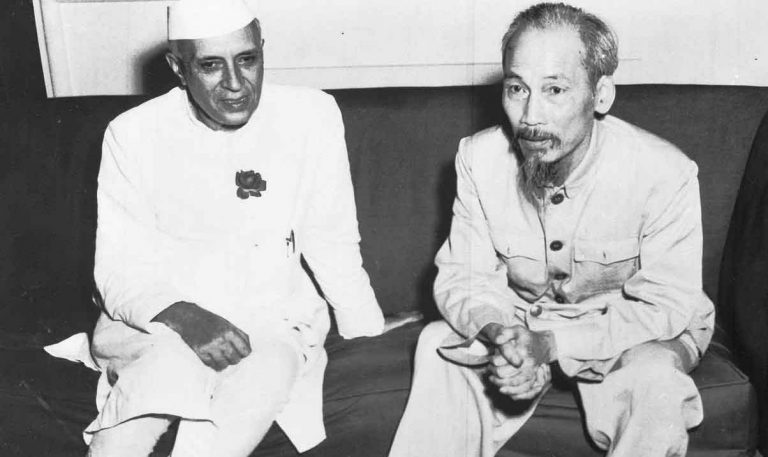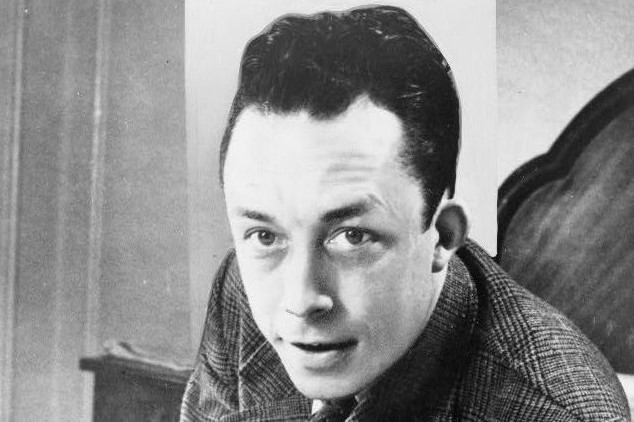Begum Rokeya’s Guide to Utopia

Raina Bhattacharya is a development professional from Assam who loves literature, music, babies and anything that can catch her imagination. She loves interesting conversations and experiences that leave a mark in her heart and mind.

In the year 1905, India was being ravaged by the oppressive policies of the British. Bengal was being partitioned into the Muslim majority regions of East Bengal and the Hindu majority regions of the West. The Indian National Congress recognised that this rash and brutal act was an attempt to “divide and rule”, and a blatant disregard of the public opinion and sentiments of the people living in the state. Memorials containing thousands of signatures were sent to the Governor General of India to revoke partition. Muslim women from East Bengal were at the forefront of the protest movements against this oppressive act, and yet their signatures did not figure much in these memorials.(1) Though the reasons behind the exclusion of these signatures are unknown, the phenomenon of effacing women from historical anecdotes sadly is not. This is but one example to elucidate how the contributions of women to revolutionary movements are steadfastly erased when it comes to evidence and documentation. (2)
In this historical context when women’s contributions to history are mostly overlooked, women need to redefine the way they look at themselves to challenge and overthrow patriarchal structures. Women need to imagine alternate worlds and structures that are defined by equality, inclusion and dismantling of existing power structures. In the same year of 1905 that the Bengal partition was happening, one woman writer and activist from East Bengal was doing exactly this – she wrote what would be considered the first instance of feminist, utopian science fiction.
Begum Rokeya Shakhawat Hussain wrote “Sultana’s Dream” in 1905, a self-consciously feminist reimagining of the world and the society that she lived in. “Sultana’s Dream” showcased a utopia where women were the dominant gender, occupying positions of power and influence. This story was published in The Indian Ladies Magazine, the first magazine in India established and edited by a woman for women.(3) Though written 115 years ago, it is interesting that some of her observations and comments made on the patriarchy are still relevant today.
Begum Rokeya Shakhawat Hussain began writing about societal reform as early as 1903. In her younger years, she and her sister Karimunnesa had started learning English and Bengali under the tutelage of their brother; despite it being forbidden in their orthodox household (the women were taught only Arabic so that they could read the Quran). Begum Rokeya wrote many short stories, poems and essays in both Bengali and English that called for gender equality and emancipation of women from the shackles of patriarchy. Begum Rokeya considered the lack education for women to be one of the major factors for gender inequality. (4)
She was also a strong critic of the purdah system and attacked the extreme forms of veils which she believed was an impediment to women leading independent lives. She created a slogan “Jago Bhogini”, translated to “Wake Up Sisters”, inspiring women in Bengal to challenge and question oppressive patriarchal norms, and break the barriers holding them from progress.( 5) Naturally, this inspired ire and resistance from the very society she was trying to change. Men and women from ‘sharif’ households questioned her ideas, while she defended her positions with sharp logic –often concluding that men were responsible for the subjugation of women to perpetuate a culture where women are always dependent on men.
Even today, the conversation about feminism is a difficult one, with women and other genders fighting battles for their everyday existence. The challenges of being a fierce feminist in 1905 in East Bengal, India can perhaps be best appreciated when one looks at Begum Rokeya’s writings and the ideas that she tried to propagate. The everyday struggle of being a feminist during those times is reflected in the ideals that Begum Rokeya pushed in an attempt to be a part of societal imagination. Which is why we should be asking the question: what did Begum Rokeya’s utopia look like?
In “Sultana’s Dream”, the protagonist Sultana suddenly found herself transported to a world where she was walking in the daylight without purdah. She felt uncomfortable, but she could not observe a single man. Her guide and friend in this strange land, whom she called Sister Sara, told her that this place is called Ladyland, where “we shut our men indoors.” The gender roles are, therefore, flipped in this utopia. As the inherent absurdities in this system make themselves known, this leaves one to question the robustness of the status quo where women are relegated into the household sphere. This role reversal sheds light on the ludicrous and discriminatory arguments on the basis of which women were confined in the zenana (inner sphere).
Run entirely by women, Ladyland was a utopia which had immaculate urban planning, efficient workload management for workers (leaving ample time for leisure and to explore other ideas), and no diseases. In this utopia, an order circulated by the Queen had mandated that all the women in her country be educated. Consequently, women found themselves exploring scientific knowledge, inventing life-changing technologies and contributing to military projects. Unfortunately, the gender gap in careers in STEM is still persisting today (6). Rokeya Begum had then recognised the absence of women in science and academia. In her utopia, women thrived in their successful scientific careers, and the influence they exerted because of this expertise, led to their rise in the social and political spheres.
“Sultana’s Dream” also contained references to what was probably one of the earliest imaginations of green technology, with devices to trap solar heat and clouds. Technologies that harness solar energy for cooking and control rain as per need, were inventions that were credited to the women in this society. Futuristic vehicles were also present, which had wings that worked on electricity and planks that had hydrogen balls attached to them. The hydrogen balls overcome gravity while the wings control the direction of movement. With this vehicle, people flew to move from one place to another. (Reminding the reader again that this was imagined in 1905).
And as it happens with most societies, the rise of scientific temperament had led to sweeping societal changes. In Ladyland, the country did not turn refugees out. In the new system with men in the domestic sphere, crime had reduced significantly and there was no need for a criminal justice system. Technologies were used for agriculture, aerial conveyance, and rain and weather control. The religion followed was secular and agnostic.
What is interesting about “Sultana’s Dream” is that it challenged prevalent notions about women and their position in society. It presented counter-arguments to some of the commonly held notions about the differences between men and women which are considered “natural”, and which are used to justify the subjugation of women. For eg. In one instance, Sultana mentioned that men have bigger and heavier brains than women, to which Sister Sara retorted that even elephants have bigger and heavier brains than man. This does not lead to elephants employing and enchaining men.
On another instance, women’s scientific discoveries were pejoratively referred to as “Sentimental nightmares” by the men. But the women took their time and eventually in a military campaign, showed off the power and utility of these machines. Sadly, it also shed light on the reigning hyper-masculine idea that technology is of lesser importance if it isn’t useful to the military and war.
Begum Rokeya’s guide to a utopia was a vision of women empowerment and gender equality. Her life and ideas are an inspiration for everyone who believes and further the ideals of gender equality and feminism. Her death anniversary is commemorated as Rokeya Day on December 9 in Bangladesh (7). In 2008, a state-run university called Begum Rokeya University was launched in Bangladesh (8). Devangana Kalita and Natasha Narwal, unlawfully arrested under the draconian UAPA had a reading session of “Sultana’s Dream” in their prison barracks for all the incarcerated women (9). “Sultana’s Dream” is a call to freedom for all women to find their freedom in this patriarchal world. Its legacy and ideals continue to inspire champions for gender equality even today.
References
1. Bhaumik P. (2017, December 14). Sixty Thousand Signatures against the Bengal Partition: Bengali Resistance in 1905. Retrieved 10.06. 2021 from https://blogs.bl.uk/untoldlives/2017/12/sixty-thousand-signatures-against-the-bengal-partition-bengali-resistance-in-1905.html
2. Heing B. (2015, November 5). The History of Erasing Women’s History. Retrieved 12.06.2021 from https://www.vice.com/en/article/bmw4aq/the-history-of-erasing-womens-history
3. Lewton T. (2019, July 31). Feminist Visions of Science and Utopia in Rokeya Shakawat Hussain’s “Sultana’s Dream” . Retrieved 09.06.2021 from https://www.ladyscience.com/features/feminist-visions-science-fiction-utopia-rokeya-hossain
4. Deol T. (2020, December 9). Rokeya Sakhawat Hossain – a pioneer of women’s education who strove for a feminist utopia. Retrieved 06.06.2021 from https://theprint.in/features/rokeya-sakhawat-hossain-a-pioneer-of-womens-education-who-strove-for-a-feminist-utopia/561895/
5. Nasir A. (2017, July 6). Begum Rokeya : The Writer Who Introduced Us to Feminist Sci –Fi. Retrieved 12.06.2021 from https://feminisminindia.com/2017/07/06/begum-rokeya-essay/
6. National Girls Collaborative Project, 2018. Retrieved 07.06.2021 from https://ngcproject.org/statistics
7. Azim F. (2020, December 09). Rokeya Day: Rokeya’s vision for women. Retrieved 13.06.2021 from https://www.thedailystar.net/opinion/news/rokeya-day-rokeyas-vision-women-2008157
8. Begum Rokeya University website. Retrieved on 12.06.2021 from https://brur.ac.bd/general-information/
9. Narwal N, Kalita D. (2021, June 13). “Love and Rage”: Natasha and Devangana’s letters of hope and resistance from Tihar Jail 6. Retrieved on 13.06.2021 from https://caravanmagazine.in/crime/love-and-rage-natasha-narwal-devangana-kalita-letters-tihar-jail
IMAGE CREDITS: The Daily Sun







